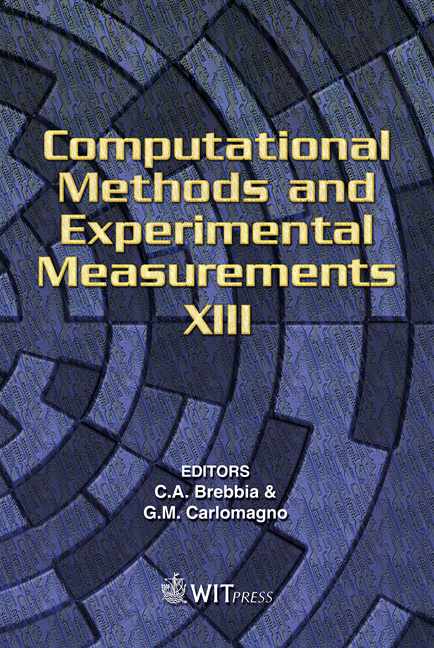Application Of The Shakedown Analysis In The Elastic: Plastic Assessment Of Cracked Plates
Price
Free (open access)
Transaction
Volume
46
Pages
10
Published
2007
Size
365 kb
Paper DOI
10.2495/CMEM070611
Copyright
WIT Press
Author(s)
M. A. Belouchrani
Abstract
In this work, a new method in the elastic-plastic calculation of cracked plates, based on shakedown analysis, is presented. This method presents an interesting alternative to classical methods in the structure design, especially when the loading is variable. It permits, via a simple elastic calculation and a mathematical optimisation, the determination of a load domain situated between the elastic and the limit load domains, within which the loading can evolve arbitrarily, while insuring the reliability of the cracked structure versus the plastic ruin and the unstable crack propagation. Also, by taking into account the microstructure of the material and the residual stresses, this method allows the determination of a stress intensity factor corresponding to the shakedown state. This factor is comparable to the fatigue threshold and can be used in the crack admissibility criteria. Keywords: shakedown, crack, notch, finite elements analysis, stress intensity factor, fatigue threshold. 1 Introduction The structures used in the aeronautics, nuclear plants and naval yards are generally plane forms, originally, constituted of ductile material plates (metals and alloys) that could support irreversible plastic deformations before to break, and that even when they contain manufacture defects or cracks. Cracks constitute the major problem of designers, because they can falsify completely the prediction of the conceived structure behavior, by accelerating their ruin through brutal propagation of these cracks. When a crack is detected in a system, the designer undertakes an analysis, where he will have to explore the brutal rupture risk, the plastic ruin risk and the foreseeable evolution of the fissure.
Keywords
shakedown, crack, notch, finite elements analysis, stress intensity factor, fatigue threshold.





